Experience the Grandeur of Wat Chedi Luang
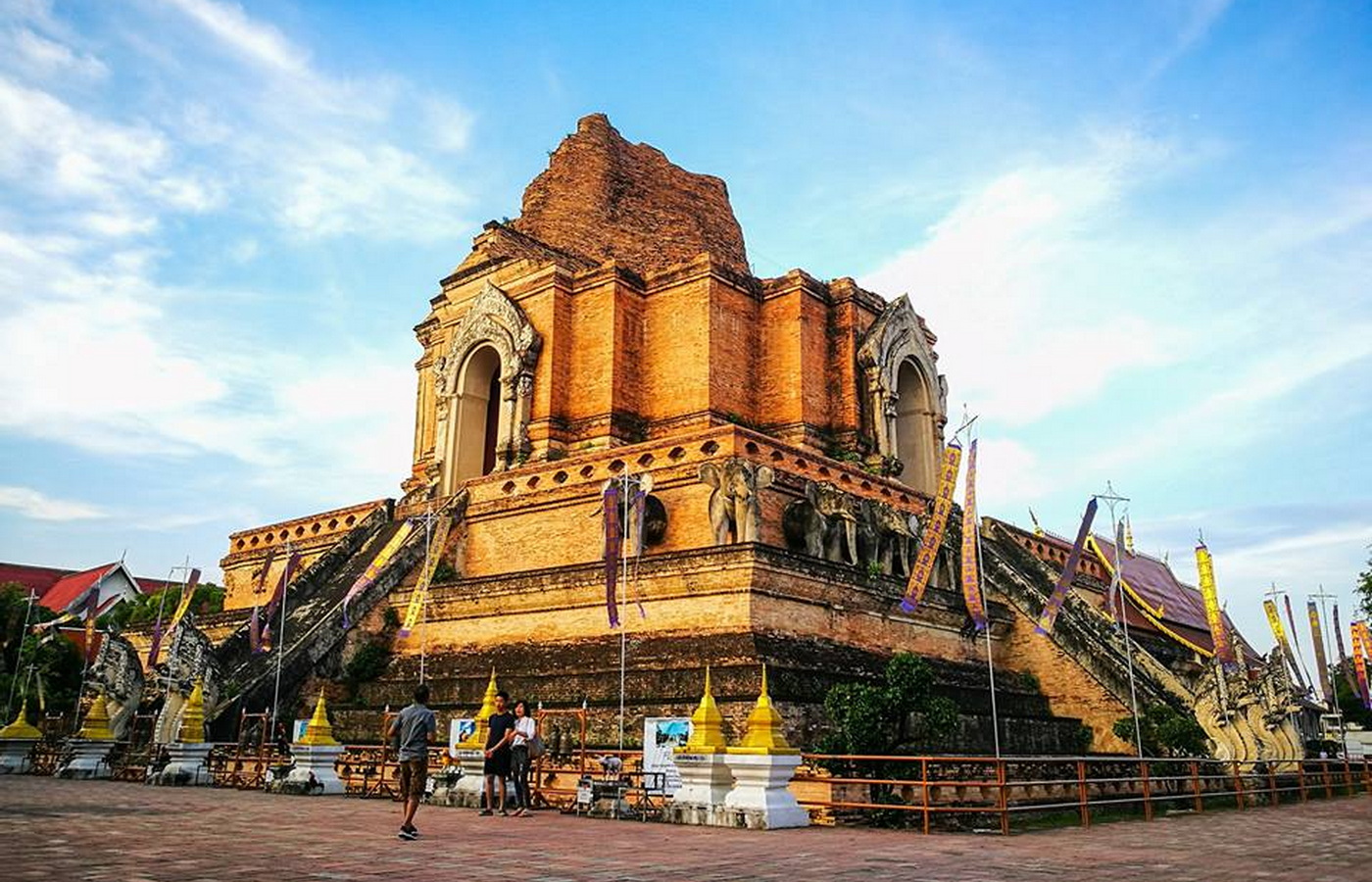
Walking through Chiang Mai’s Old City, Chedi Luang Varaviharn temple or Wat Chedi Luang isn’t just seen — it’s felt. It’s a place where devotion pulses in every ritual, where the local people’s faith isn’t something past but alive: vendors arranging flowers, monks chanting at dawn, children lighting incense, elders whispering blessings. Among Attractions in Chiang Mai, few carry with them this living, breathing connection between community and belief.
📍Wat Chedi Luang: A Journey Through Time
Wat Chedi Luang, the Temple of the Great Stupa, stands as a monumental testament to Chiang Mai’s illustrious past. Built in the 14th century under King Saen Muang Ma, it has witnessed the city’s transformation over centuries. The name “Chedi Luang” reflects the temple’s significance, with “chedi” meaning stupa and “luang” meaning large or royal.
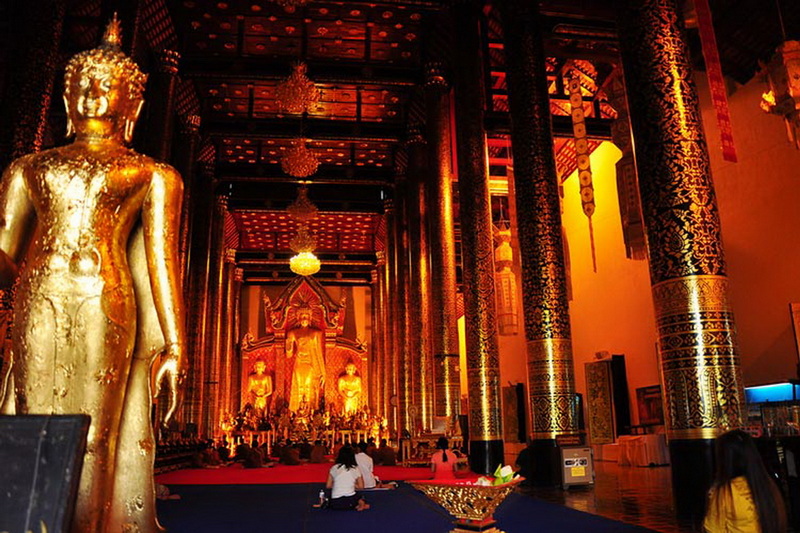
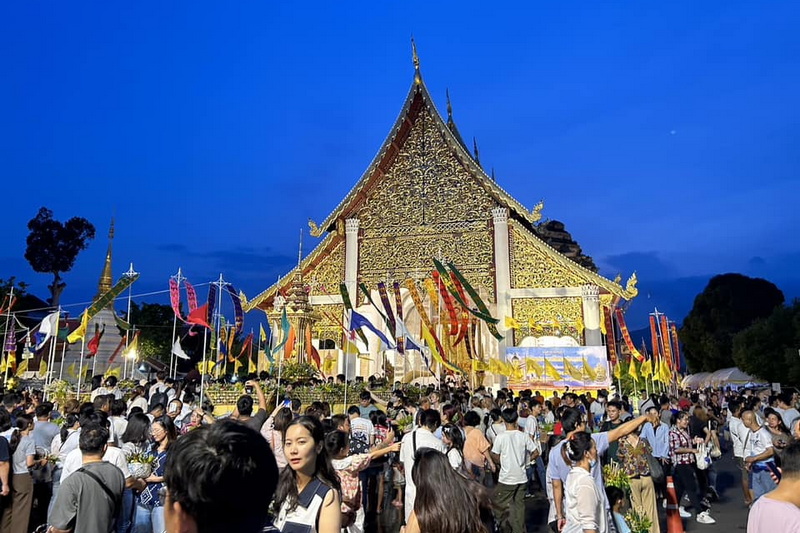
The Massive Chedi
The temple’s main attraction, the massive chedi, was initially constructed to house the ashes of King Saen Muang Ma’s father. Although partially destroyed by an earthquake, the chedi’s grandeur remains intact. The surrounding structures, including the Viharn Lai Kham and the Inthakin Pillar, add to the temple’s mystique and historical importance. Each side of the chedi features large staircases guarded by mythical Naga serpents, leading to niches that house Buddha images. The chedi’s base is adorned with stone elephants, adding to its visual appeal and historical significance.
Viharn Luang and Phra Attharot
The main viharn, Viharn Luang, built in 1928, houses the towering Phra Attharot Buddha image. This 18-cubit tall statue is a central piece of worship within the temple. Cast towards the end of the 14th century, Phra Attharot represents the Abhaya mudra, a gesture symbolizing protection and fearlessness.
The Two Viharns
Wat Chedi Luang features two viharns. The larger viharn, Viharn Luang, is an architectural marvel with its three-tiered roof and intricate wood carvings. The smaller Viharn Lai Kham is known for its exquisite craftsmanship and historical significance. Both viharns serve as important centers for worship and cultural activities.
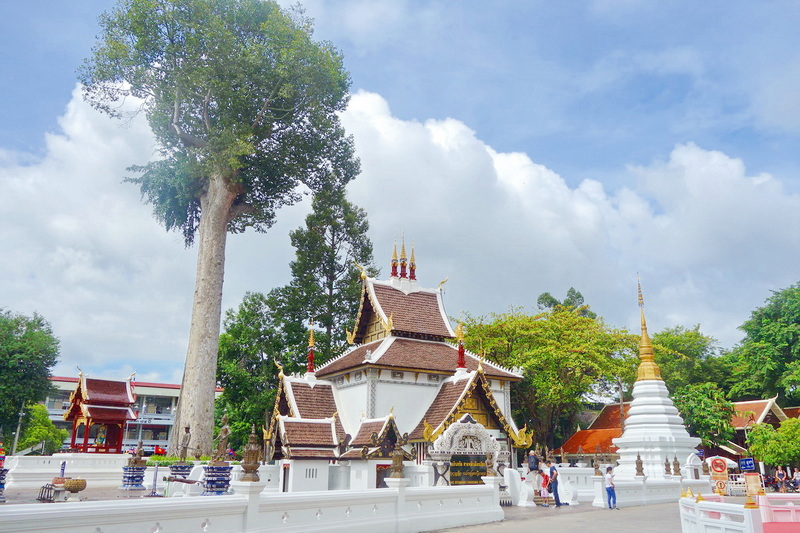
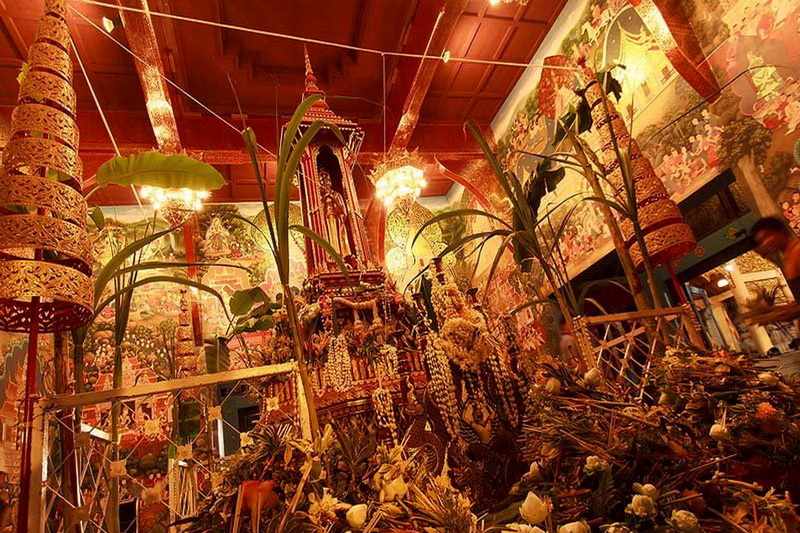
The Sao Inthakin or City Pillar
The temple grounds are also home to the revered Sao Inthakin, or City Pillar. This pillar is believed to protect the city of Chiang Mai and is housed in a small pavilion within the temple complex. The Inthakin Pillar holds significant spiritual value and is the center of annual ceremonies aimed at ensuring the city’s prosperity and well-being.
🛐 Devotion & Community Support
For many residents, the temple is more than architecture or history — it anchors daily life. Local families consistently maintain the temple grounds, sweeping courtyards, painting gates, tending trees, donating offerings. Shops around the perimeter sell fresh flowers and incense specifically for temple needs. During Inthakhin Festival, the whole neighborhood becomes involved: people chip in funds, food, flowers; volunteers help with logistics; everyone shares in the work of making the sacred happen. This shared effort is a testament to community devotion.
📅 Important Festivals & Rituals
-
Inthakhin (Sai Khan Dok / City Pillar Festival): Held annually in late May to early June, this festival is centered at Wat Chedi Luang. Locals bring flowers, candles, incense to the city pillar (Sao Inthakin), participate in blessing rituals, processions and chant under the ancient chedi. It’s believed that honoring the pillar ensures protection, wellbeing, good rains, prosperity for the city.
-
Beyond Inthakhin, Buddhist holy days (Visakha Bucha, Asalha Puja etc.) see local families coming in crowds to make merit, offering alms to monks, lighting candles and incense. During these times, the temple becomes a tapestry of faith, color, and quiet reflection, as much a social gathering as a religious observance.
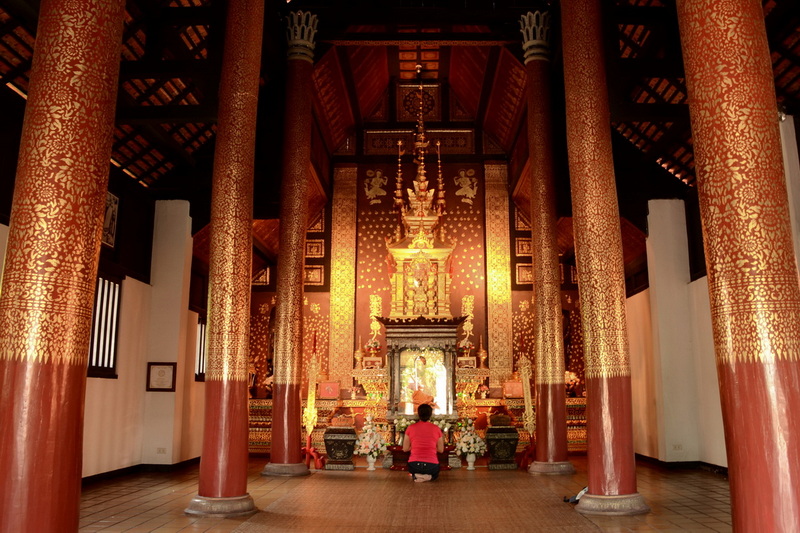
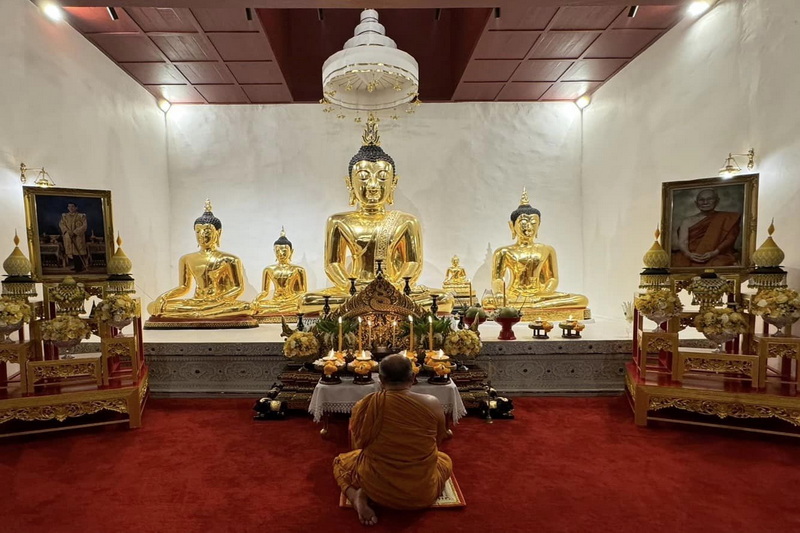
🌟 Everyday Faith / Ceremonies as Center
Everyday life around Chedi Luang temple weaves faith into routine. The early morning smell of incense, sound of monks’ chanting, laypeople in simple garb quietly entering the viharn to pray, or to seek blessings — these small acts strengthen communal identity. The temple isn’t reserved for festivals only; it’s the place where life’s transitions often intersect: blessings for newborns, ceremonies for the sick, merit‑making by those wanting peace of mind.
Monk Chats also serve this aspect deeply: locals bring questions, fears, hopes; novices and monks share teaching; children ask about traditions; all this mutual sharing strengthens belief and roots it in daily life.
🚕 Participation & Visitor Engagement
Visitors are welcomed not as spectators but as respectful companions in faith. If present during festival times, you’ll likely be invited to join processions, make modest offerings, observe rituals. The local community will see visitors participating as honoring, which deepens the visitor’s experience and connects people across backgrounds. For tours labeled Chiang Mai Tours one day, a day that includes engagement with these community rituals or festival events can leave deeper impressions than simply seeing monuments.
🧭 Tips & When To Experience It Fully
-
Best to go during Inthakhin festival; you witness the fullest outpouring of local faith and communal support.
-
Even outside festivals, early morning or late evening gives the clearest sense of solemnity.
-
Dress modestly, be respectful in behavior especially during rituals.
-
If possible, connect with local guides or volunteers who can explain what each ritual means — for both locals and visitors, understanding ritual meaning deepens the encounter.
